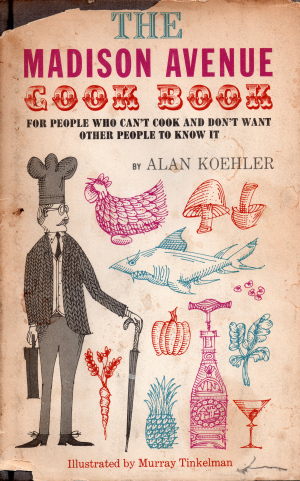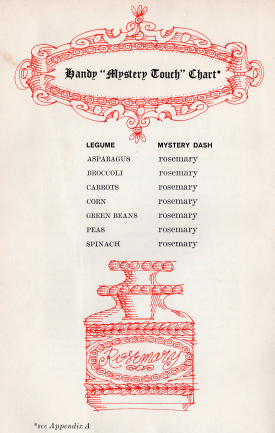Preserved grape sauce
This is an innovative and bracing sauce that works with any oily, or pelagic, fish. It is from Essence (Bath, England 2006), the otherwise intimidating cookbook by the redoubtable David Everitt-Matthias at the Champion Sausage in Cheltenham. Before whipping up this quick sauce you will need to cure a batch of his preserved grapes a few days in advance.
The grapes:
-1 lb seedless grapes (“buy the juiciest grapes”)
-½ oz salt (by weight)
-2 Tablespoons sugar
-2 Tablespoons grapeseed oil
-a 1:1 ratio of grapeseed and extra virgin olive oil for storage
- Blanch the grapes in boiling water for 10 seconds and shock them under a cold tap immediately.
- Drain the grapes and let them dry while you preheat the oven to 235 (not a typo; this is a slooow oven).
- Roll the grapes in a single layer onto a cookie sheet greased with a little more grapeseed oil and sprinkle them with the salt and sugar before baking them until they begin to shrink and wrinkle: This should take 2 ½-3 hours.
- Let the grapes cool, then gently tip them into a mason jar only big enough to fit them. Cover them with the 1:1 oil ratio and store in the refrigerator.
Their sauce:
-verjus (preferred) or white wine
-unsalted butter
-preserved grapes
- Reduce as much verjus or wine as you need by half over high heat, lower it to medium and swirl in as much butter as you like to enrich and thicken the reduction.
- Reduce the heat under your pan to low add add as many of your preserved grapes as appeals to you, heat them through and serve with fish.
Penultimate notes:
- The original recipe along with the quotation from the list of ingredients for preserved grapes appear at page 18 of Essence.
- Verjus is not easy to find in the United States. It is essentially (!) the sour juice of unripe grapes and complements the flavor of sweeter ingredients like fruits and berries. It featured prominently in English ‘receipt,’ or recipe, manuscripts from the Middle Ages into the seventeenth century but has fallen from favor in domestic kitchens. There is nothing quite like it so verjus is worth seeking out for a special occasion. A good if pricey brand is ‘Eric Bur’ from Perigord. It will set you back about $16 for 330ml/11.63 oz (false precision from the French).
 - Grapes and fish have a long association. Sole Veronique is a hoary classic, and in 1962 the madcap Madison Avenue Cook Book by Alan Koehler (New York) offered its readers a surprisingly good recipe for “Sole of Deception FTC.” The cookbook is based on the premise, not at all a bad one, that advertising is misdirection designed both to flatter and exploit the insecurities of the potential consumers of various products (the “Status Stew” is good too). The book is aimed at those in underequipped urban kitchens who, despite their nonexistent culinary skills, aspire to impress or even overawe the snobbish and competitive consumers, ‘friends and enemies’ alike, of dinner party fare. In addition to a few simple recipes camouflaged by impressive presentation, The Madison Avenue Cook Book outlines a series of diversionary tactics designed to prevent its reader’s guests from discovering those nonexistent skills and simple preparations. Koehler explains that
- Grapes and fish have a long association. Sole Veronique is a hoary classic, and in 1962 the madcap Madison Avenue Cook Book by Alan Koehler (New York) offered its readers a surprisingly good recipe for “Sole of Deception FTC.” The cookbook is based on the premise, not at all a bad one, that advertising is misdirection designed both to flatter and exploit the insecurities of the potential consumers of various products (the “Status Stew” is good too). The book is aimed at those in underequipped urban kitchens who, despite their nonexistent culinary skills, aspire to impress or even overawe the snobbish and competitive consumers, ‘friends and enemies’ alike, of dinner party fare. In addition to a few simple recipes camouflaged by impressive presentation, The Madison Avenue Cook Book outlines a series of diversionary tactics designed to prevent its reader’s guests from discovering those nonexistent skills and simple preparations. Koehler explains that
“a Madison Avenue adman must appear to know a great deal about many subjects which he actually knows little or nothing about. And he must be skilled in adapting his few ideas to a wide variety of purposes. He must make a paucity seem plethora.” (Madison Avenue 5)
The Madison Avenue Cook likewise should
“[r]emember you are not perpetrating dinner but a deception. Your ravishing food notwithstanding, your primary concern is to mislead, however fortuitously you may nourish, your guests…. A detail vital to the success of your cuisine is to keep The Madison Avenue Cook Book concealed whenever guests are at large. (You may feel more confident if you have a number of authoritative prop cook books on prominent display like the stage-luggage law books in a lawyer’s office, but these remain uncracked.) No one may know that your repertoire includes only those recipes listed here.” (Madison Avenue 11, 23)
All this remains sound advice even, to a great extent, for use by skilled cooks trying to punch above their culinary weight with pretentious or otherwise difficult diners. Among your tactics:
“Ready-prepared foods are used whenever possible… Of course their wrappers, jars or cans are thrown down the incinerator before the first guest arrives” and [n]o dish may go to table anyway without at least one Mystery Touch ingredient.” (Madison Avenue 14)
There also is “Salad Dressing ‘Bonnes Saisons,’” essentially a dry dressing mix in disguise: It, in turn, is a constituent of “Anonymous Sauce” which features in a recipe that “should be called stuffed avocado instead of stuffed crab, but it’s not.” (Madison Avenue 57)
 To prepare Sole of Deception FTC, in which British foodways feature:
To prepare Sole of Deception FTC, in which British foodways feature:
“For each guest borrow a presentable oven-proof dish, with sides, from a friend. Place a filet or two of fresh but not necessarily pedigreed fish, which you bill as Dover sole flown from England the night before, into each, on top of a tablespoon of butter. Spread a mixture of half sour cream and half mayonnaise, into which you have blended a little lemon juice and a lot of sliced mushroom caps (see CHAMPIGNONS) sautéed with a lot of seedless white grapes, liberally over fish. Bake for 20 minutes at 350°. Never on Friday.” (Madison Avenue 35)
Koehner candidly discloses that “[w]e include this recipe because without it we would have no fish dish at all. And because the stature of a cook is instantly jacked up a notch when a guest comes across a whole cooked grape in anything.” (Madison Avenue 35)
To lighten the dish, reduce the proportion of mayonnaise or replace the sour cream with yogurt. The sole may be less deceptive without the grapes but will not miss their absence much.
It is time to return to preserved grapes for an interim coda. As Everitt-Matthias notes of his recipe for them, “why don’t you try this with gooseberries, but increase the sugar a little?” (Essence 18)

